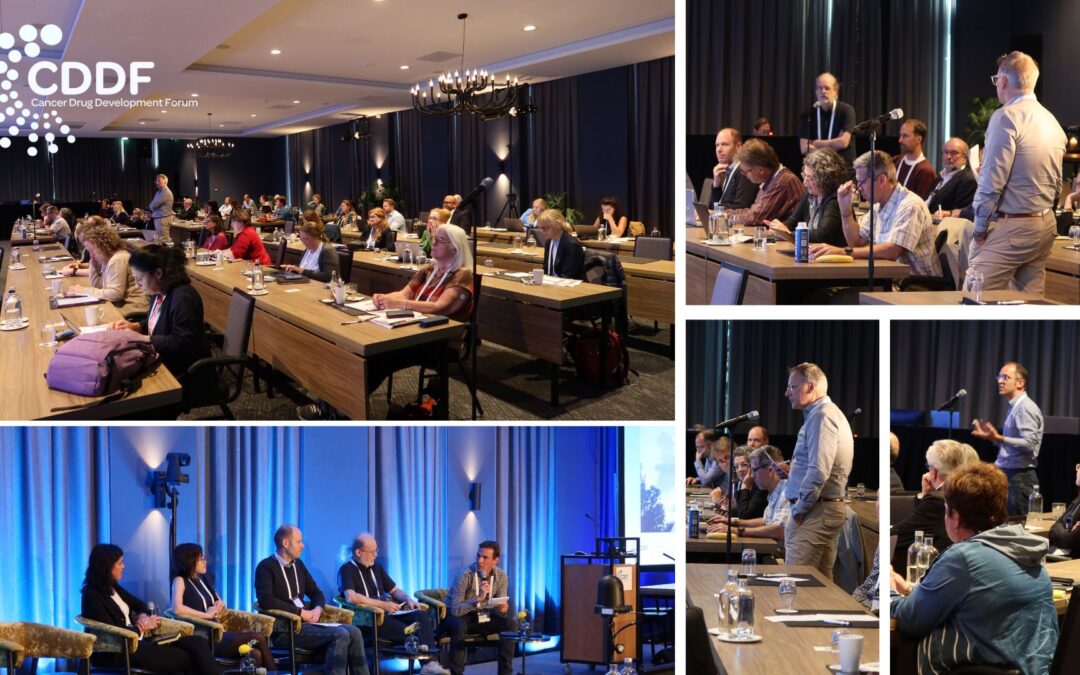📢 The Cancer Drug Development Forum (CDDF) workshop on “Innovative Oncology Trial Designs” concluded successfully on its first day, bringing together key stakeholders in cancer drug development for in-depth discussions on a range of topics.
Here are key takeaways and next steps from each session:
SESSION 1: ENDPOINTS FOR INNOVATIVE CLINICAL TRIALS
KEY TAKEAWAYS:
- RECIST is validated, but is adaptable, e.g. iRECIST for immunotherapy. Current considerations are ctDNA and radiographic assessment, but not yet validated.
- It takes 8-10 trials to validate an endpoint; however, there are no novel validated endpoints at this time
- There are distinct early- and late- endpoints that can provide better evidence, conditional mark
- Ensure maturity of data before decision making
- Patient-meaningful endpoints need to be considered at individual-level
NEXT STEPS
- Harmonise HTA, regulatory, and patient needs
- Artificial Intelligence will likely revolutioniseendpoints, but will require confirmation and validation
SESSION 2: INNOVATIVE TRIAL DESIGNS AND ESTIMANDS
KEY TAKEAWAYS:
- When designing clinical trials, it is essential to precisely define the objective of the trial, formulate the research question in a clear way and consider the population as well as research context when selecting the most appropriate study design. Study design, outcomes collected and analysis methods need to be predefined and allow answering of the research question formulated.
- Good planning from the start and writing the protocol in a clear way that provides clear arguments for the selected design is essential both for standard and innovative design. This also applies for the good reporting of clinical trials.
- Adaptive trial methodology can be used to increase efficiency of clinical trial designs and has been applied successfully in the early-phase setting.
- Innovation of methodology should not be a means per se, its added value should be in facilitating answering of the research question.
- The estimands framework is an essential framework for all future studies, to ensure the design starts by focusing on the research question and frames the endpoints, population as well as intercurrent events clearly. This subsequently guides data collection and statistical analysis.
- The estimands framework should be used for scientific advice on other interactions with regulators. It requires a cross-functional approach and input from other experts beyond statisticians.
- The estimands framework affects all aspects of clinical trial design, conduct and analysis and should become the norm in future conversations on clinical trials. We need all experts to adopt it.
NEXT STEPS
- Ensure any conversation on clinical trial innovation starts with asking what is the scientific question, define the estimand and select the methods to fit the question and the context.
- Share more examples and learnings from the use of adaptive trial designs as well as the use of the estimands framework to increase awareness and adoption.
- Encourage and enable cross-stakeholder and cross-functional collaboration on estimands, specially in non-statistical fora.
- Provide training to iDMCs and ethics committees to understand innovative trial designs and the estimands framework
SESSION 3: TOWARDS PATIENT-CENTRIC EVIDENCE GENERATION
KEY TAKEAWAYS:
- Patients’ PREFERENCE DATA (PPD) can impact a wide range decisions, from clinical development to regulatory approval, access and treatment decision-process: it is not just about clinical efficacy!
- Stakeholders should work together to define, incorporate and collect PPD without duplicating efforts. Patient involvement is essential (esp. design and analysis)
- External Control ARM (ECA) trials are alternative to a trial internal control arm and can be considered when RCTs are unethical, unfeasible or lack equipoise (e.g rare indications / molecular subgroups, significant unmet medical need, limited treatment options, pediatric indications).
- They are not a shortcut and definitely not a low burden effort: they require a convincing rationale that a RCT is not feasible, large high quality & complete databases, a strong design and analytical plan.
- High burden to demonstrate that the ECA meets the bar for valid treatment comparison
- Pragmatic trials are meant to inform decision-makers, to enhance generalizability by enrolling a population relevant to the decision in practice, streamline data collection or measure a broad range of outcomes
- Extensive, multidisciplinary/multistakehholder discussion including regulatory guidance are key to their design (feasibility and clinical context), conduction (operational and logistic aspect) and ultimate success.
NEXT STEPS
- Data and endpoints (PPD) that are meaningful to patients should be at the center of every clinical trialàappropriate and regular collection of PPD should be integral part of trial design, as per other endpoints (OS, PFS, RR). Time to collect and make good use of PPD!
- ECA trials represent a resource particularly in certain domain, however àhybrid randomized designs ( e.g. phase II single arm and registrational phase III with hybrid control arm) may provide more robust results to support drugs approval and reimbursement.
- Pragmatic trials are instrumental in increasing generalizability, grant appropriate flexibilities and offer access to trials to a higher number of patients willing to participate à Constant dialogue with regulators and HTA bodies is key.
